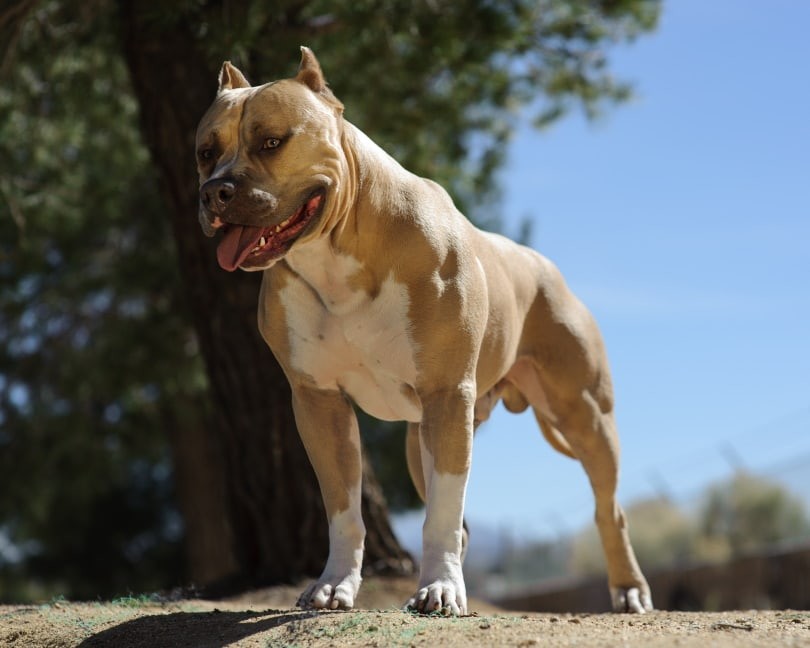
The question of whether pit bulls make effective guard dogs has been a subject of ongoing debate in the canine community. While pit bulls possess impressive physical attributes including muscular builds and powerful jaws, their natural friendliness toward humans presents an interesting paradox for guard dog duties. Despite their intimidating appearance and historical reputation, pit bulls were actually bred to be non-aggressive toward humans, exhibiting strong loyalty and affection for their families. This analysis examines the complex factors that determine a pit bull's suitability as a guard dog, including their temperament, trainability, and protective instincts.
Physical Traits and Guard Dog Potential
Pit bulls possess several physical characteristics that make them potentially effective guard dogs. With muscular builds, broad chests, and powerful jaws, their intimidating appearance alone can deter intruders. According to breed standards, adult male pit bulls typically weigh between 35-60 pounds while females range from 30-50 pounds, with heights of 18-21 inches for males and 17-20 inches for females.
Training Considerations and Limitations
While physically capable, pit bulls have some inherent traits that can limit their effectiveness as guard dogs. Research indicates they were historically bred to be non-aggressive toward humans, making them naturally friendly even with strangers. Their high intelligence and eagerness to please means they can be trained for protection, but their affectionate nature may lead them to welcome intruders rather than guard against them without proper training. When comparing breeds, German Shepherds are generally considered more naturally protective, while pit bulls require more consistent training to develop guarding behaviors.
Understanding Pit Bulls as Guard Dogs: Physical and Temperamental Traits
Protective Instincts and Family Bonds
While pit bulls possess an intimidating appearance, their protective nature stems primarily from their strong family bonds rather than inherent aggression. According to research, they earned the nickname "Nanny Dogs" due to their exceptional protectiveness of children, often treating them as their own. Their high intelligence allows them to assess threats before acting, making them more measured in their protective responses compared to some traditional guard dog breeds.
Breed History and Modern Applications
Unlike breeds specifically developed for guarding, pit bulls were originally bred for bull-baiting and later dog fighting, with human aggression being strictly culled from bloodlines. This historical breeding focus means modern pit bulls tend to be more people-friendly than naturally suspicious. While they can be trained as guard dogs, their natural sociability means they require specific training to overcome their friendly predisposition toward strangers. Early positive experiences and proper socialization are crucial in developing balanced protective behaviors without excessive aggression.
Training and Socialization Requirements for Guard Dog Success
Early Training Foundations
While previous sections covered natural protective traits, successful guard dog training requires establishing core foundations early. Training should begin between 8-16 weeks with basic obedience commands like "stay," "come," and "leave it." These fundamentals create the control needed before introducing protective behaviors. Unlike breeds bred specifically for guarding, pit bulls require extra focus on impulse control given their friendly nature.
Advanced Socialization Protocols
Beyond standard socialization covered previously, guard dog preparation demands structured exposure to diverse scenarios. Experts recommend controlled introductions to different people entering the property, teaching the dog to distinguish between welcome guests and threats through positive reinforcement. The training must counter pit bulls' natural friendliness - they should learn to maintain alertness without defaulting to their typical sociable response. This involves careful desensitization to common triggers while reinforcing appropriate protective reactions. The process requires consistency and patience, as pit bulls' ingrained tendency toward human friendliness means protective behaviors must be deliberately cultivated rather than simply enhanced as with traditional guard breeds.
Legal and Social Considerations for Pit Bull Guard Dogs
Breed-Specific Legislation Impact
While previous sections covered training and physical capabilities, legal restrictions significantly affect pit bulls' viability as guard dogs. According to research, 18 states have banned breed-specific legislation, but many local jurisdictions still maintain restrictions on pit bull ownership. These laws can limit where pit bulls can live and work as guard dogs, requiring owners to carefully research local regulations. Even in areas without breed bans, insurance companies may deny or increase rates for homeowners with pit bull guard dogs.
Public Perception Management
Unlike traditional guard dog breeds, pit bulls face unique social challenges that impact their effectiveness. Studies show their intimidating reputation can work as a deterrent, but also creates liability concerns. While German Shepherds and other conventional guard breeds generally receive public acceptance in protective roles, pit bulls often face skepticism and fear regardless of training level. This stigma requires owners to implement additional management strategies when using pit bulls as guard dogs, including clear property signage, proper containment systems, and enhanced supervision during public interactions to maintain both security and community relations.
Conclusion
While pit bulls possess physical attributes that could make them intimidating guard dogs, including muscular builds and powerful jaws, research indicates they are not naturally suited for guard dog roles due to their inherently friendly temperament toward humans. Their historical breeding focused on eliminating human aggression, resulting in modern pit bulls that tend to be more welcoming of strangers than suspicious. Though they can be trained as guard dogs through consistent, specialized training programs, they require significantly more effort to overcome their sociable nature compared to traditional guard breeds like German Shepherds.
Beyond training challenges, pit bulls face unique obstacles as guard dogs due to breed-specific legislation and negative public perception. These legal and social barriers can limit their effectiveness and create additional liability concerns for owners. While pit bulls can be protective of their families and show intelligence in assessing threats, their natural friendliness toward humans, combined with external challenges, suggests they may be better suited as family companions rather than dedicated guard dogs. Those seeking a guard dog may want to consider breeds specifically developed for protective work.